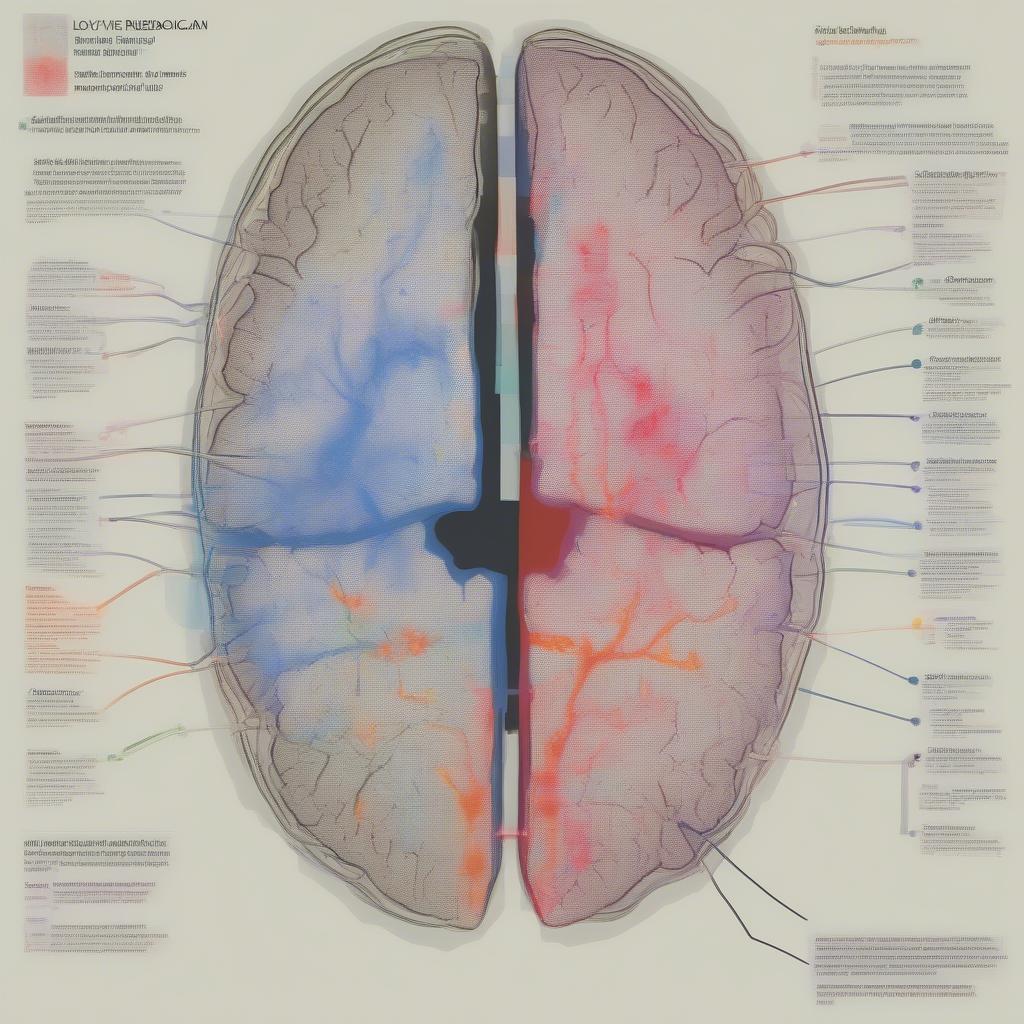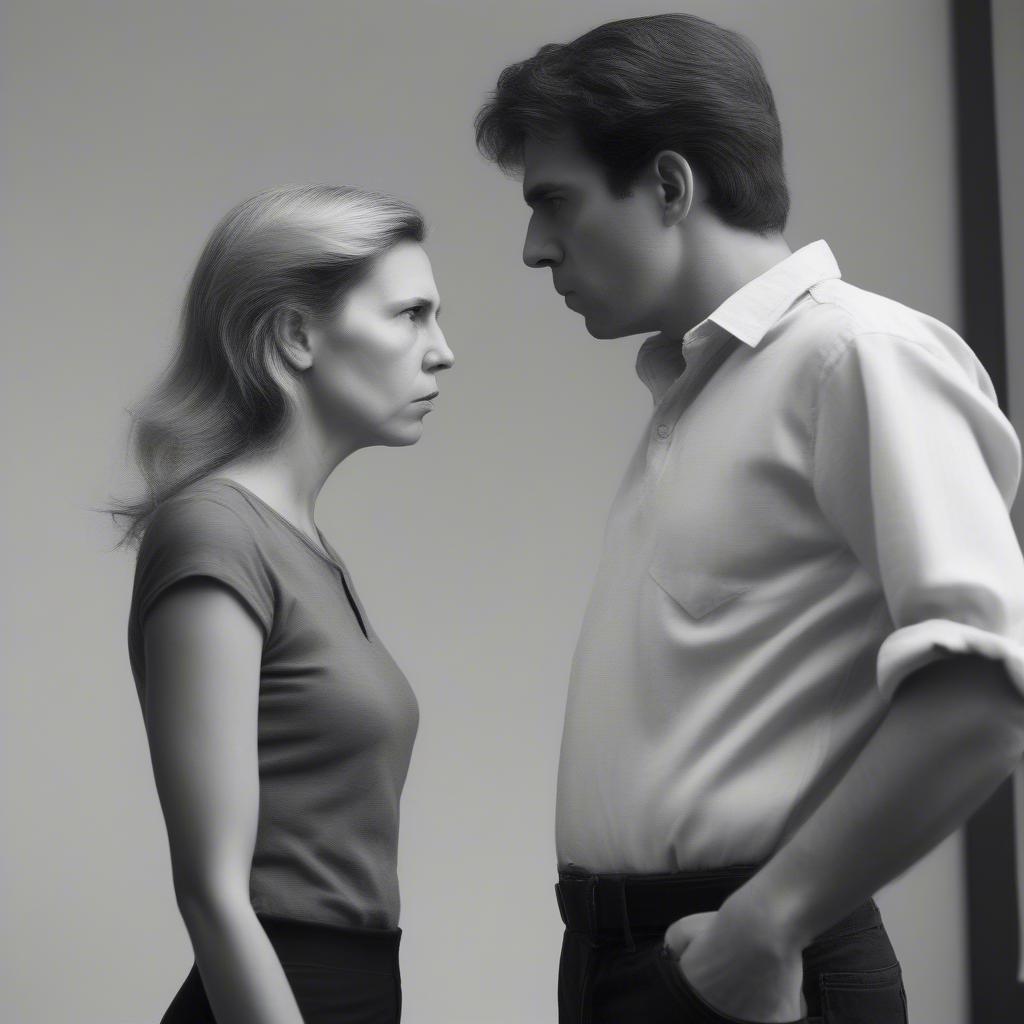Love and hate, two seemingly opposing forces, often reside surprisingly close to each other. The thin line between love and hate behind the scenes is a complex and fascinating dynamic explored in psychology, literature, and everyday life. This intricate relationship often leaves us wondering how such intense emotions can coexist and even transform into one another.
Exploring the Paradox of Love and Hate
The close proximity of love and hate can be explained by several psychological factors. Both emotions involve intense feelings and a significant investment of emotional energy. They both focus on a specific person or object, unlike indifference, which implies a lack of interest or concern. This intense focus, whether positive or negative, creates a powerful connection.
- Shared Neurological Pathways: Neuroscience suggests that love and hate activate some of the same brain regions, particularly those associated with reward and motivation. This overlap might explain why the shift between these emotions can feel so swift and dramatic.
- Frustrated Needs and Expectations: Love often involves a set of expectations and needs. When these aren’t met, it can breed resentment and frustration, potentially fueling the flames of hate. This is particularly true in romantic relationships, where unmet needs for connection, validation, or security can lead to feelings of betrayal and anger.
- Narcissistic Injury: In some cases, hate can arise from a bruised ego. When someone we love criticizes or rejects us, it can feel like a personal attack, leading to feelings of humiliation and rage. This is often referred to as narcissistic injury, a blow to our self-esteem that can trigger a defensive reaction of hate.
 Brain Scan Showing Overlapping Areas for Love and Hate
Brain Scan Showing Overlapping Areas for Love and Hate
From Love to Hate: The Descent
The transition from love to hate isn’t always sudden. Often, it’s a gradual process, a slow burn fueled by repeated disappointments and unresolved conflicts. This descent can be marked by:
- Increasing negativity: Positive interactions become less frequent, replaced by criticism, complaints, and arguments.
- Erosion of trust: Betrayal, dishonesty, or consistent disregard for the other person’s feelings can erode trust, creating a breeding ground for resentment.
- Withdrawal and avoidance: As the negative feelings intensify, individuals might start withdrawing emotionally and physically, creating distance and further fueling the negativity.
 Couple Arguing with Visible Emotional Distance
Couple Arguing with Visible Emotional Distance
Can Hate Turn Back into Love?
While the path from love to hate can be a slippery slope, the reverse is also possible, though often more challenging. Healing the rift requires:
- Acknowledging and addressing the underlying issues: Identifying the root causes of the hate, whether it’s unmet needs, unresolved conflicts, or betrayal, is crucial for moving forward.
- Open and honest communication: Creating a safe space for honest and vulnerable communication is essential for rebuilding trust and understanding.
- Forgiveness and letting go: Forgiveness, both of oneself and the other person, is a critical step in releasing the negativity and allowing for healing.
“Reconciling love and hate requires courage, vulnerability, and a willingness to confront the pain,” says Dr. Anya Sharma, a renowned relationship therapist. “It’s about rebuilding the connection from the ground up, with a renewed commitment to understanding and empathy.”
 Couple Holding Hands in Reconciliation
Couple Holding Hands in Reconciliation
Conclusion: Navigating the Complex Terrain of Love and Hate
The thin line between love and hate behind the scenes reminds us of the complexity and intensity of human emotions. Understanding the dynamics at play can help us navigate these challenging emotional landscapes with greater awareness and compassion. By addressing the root causes of conflict and fostering open communication, we can potentially bridge the divide and transform hate back into love, or at least, find a path towards peaceful coexistence.
FAQ
- Is it normal to feel both love and hate for someone? Yes, it’s perfectly normal and often reflects the complexity of human relationships.
- What are the signs that love is turning into hate? Increased negativity, erosion of trust, and withdrawal are common indicators.
- Can hate be a defense mechanism? Yes, sometimes hate can be a way to protect ourselves from emotional pain or vulnerability.
- Is it possible to repair a relationship damaged by hate? Yes, but it requires commitment, communication, and a willingness to address the underlying issues.
- What should I do if I’m experiencing these conflicting emotions? Seeking support from a therapist or counselor can provide valuable guidance and support.
Need More Help?
For personalized support and guidance navigating relationship challenges, please contact us:
Email: contact@daiduongtranhba.com
Address: Michigan Ave, Suite 3100, Chicago, IL 60611, USA
Our 24/7 customer support team is here to assist you.
We also encourage you to explore other articles on our website for further insights into relationships and emotions.


